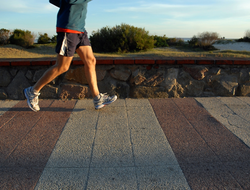Flexibility: Basic Moves
Published: December 17, 2021
Flexibility is an important component of physical fitness and can be achieved by performing simple stretching exercises two to three times a week.
Everyday activities and exercise are enhanced when you have physical flexibility and being physically flexible can protect your muscles, tendons, ligaments and joints from injury.
For some people "flexibility" may bring to mind visions of experienced yoga practitioners, gymnasts, and acrobats who appear to have the ability to take up seemingly impossible positions.
This could be discouraging. Being too flexible may have negative effects on your body.
However, a modest amount of flexibility is beneficial and can be achieved without extreme measures.
Flexibility refers to the range of motion (ROM) in a joint or group of joints and there are various ways to improve or maintain ROM in your joints.
If you participate in Yoga or Pilates classes 2-3 times per week your flexibility training will be well taken care of as both of these forms of physical activity are excellent for improving and maintaining flexibility.
Walking at a moderate pace and moving your arms through a full ROM can help maintain flexibility in your hips and shoulders.
However, we sometimes participate in activities which we do not perform regularly, but which our bodies need to be prepared for.
Exercise programs which focus on training cardiovascular fitness, and strength and endurance fitness can benefit from a flexibility component. to your exercise routine will complement your workout.
Flexibility exercises (stretching) can also reduce the negative effects brought about by work 'activities': such as sitting at a computer.
This article provides simple stretching exercises to help you improve and/or maintain your flexibility. Follow the links to learn more about the different aspects of physical activity, exercise, and fitness.
References
1.
Corbin, C.B. & Lindsey, R. (1994). Concepts of Physical Fitness. Dubuque, IA: Wm. C. Brown Communications Inc.
2.
American Council on Exercise (1996). Personal Trainer Manual. San Diego, CA: American Council on Exercise


